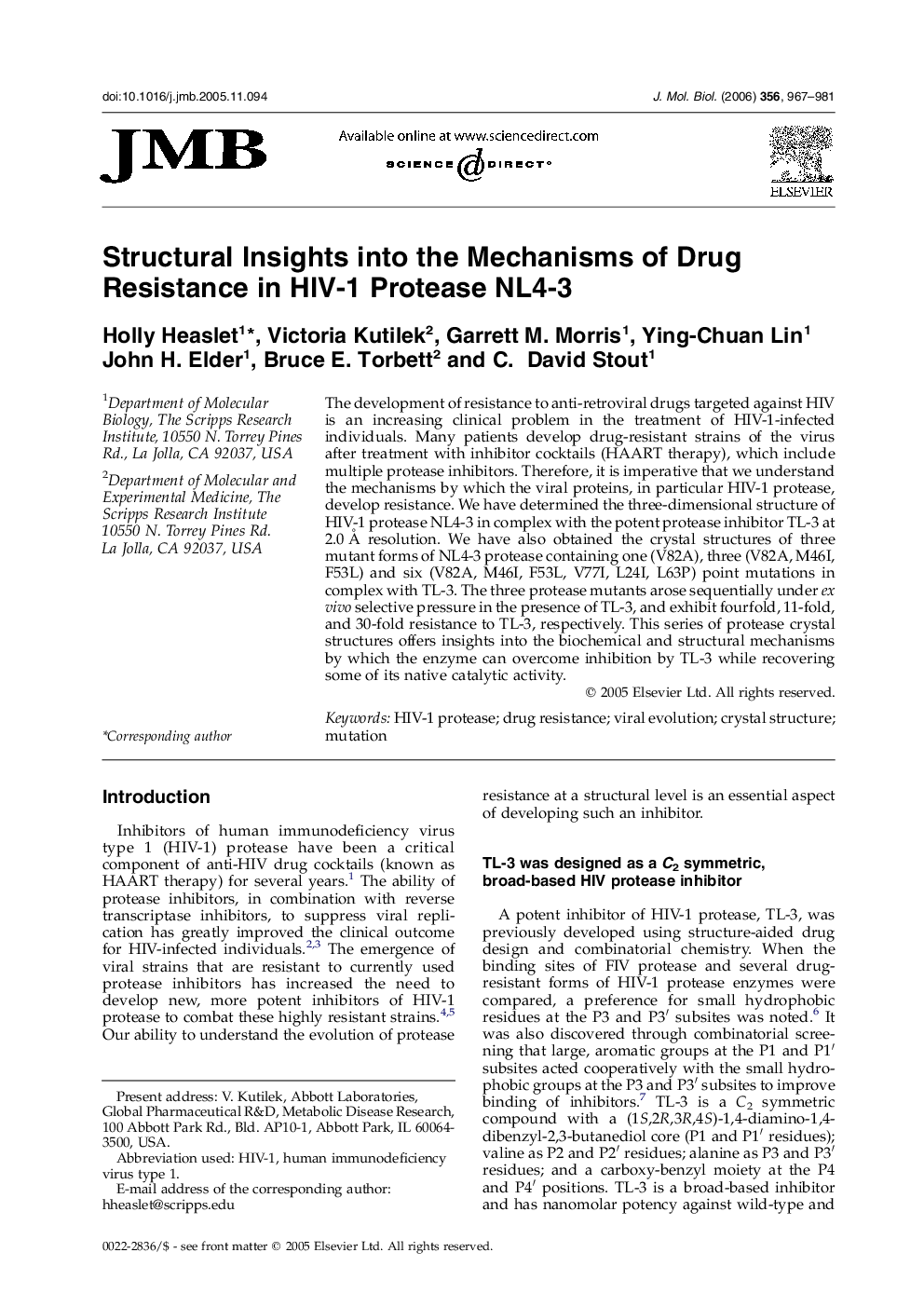| Article ID | Journal | Published Year | Pages | File Type |
|---|---|---|---|---|
| 2189887 | Journal of Molecular Biology | 2006 | 15 Pages |
The development of resistance to anti-retroviral drugs targeted against HIV is an increasing clinical problem in the treatment of HIV-1-infected individuals. Many patients develop drug-resistant strains of the virus after treatment with inhibitor cocktails (HAART therapy), which include multiple protease inhibitors. Therefore, it is imperative that we understand the mechanisms by which the viral proteins, in particular HIV-1 protease, develop resistance. We have determined the three-dimensional structure of HIV-1 protease NL4-3 in complex with the potent protease inhibitor TL-3 at 2.0 Å resolution. We have also obtained the crystal structures of three mutant forms of NL4-3 protease containing one (V82A), three (V82A, M46I, F53L) and six (V82A, M46I, F53L, V77I, L24I, L63P) point mutations in complex with TL-3. The three protease mutants arose sequentially under ex vivo selective pressure in the presence of TL-3, and exhibit fourfold, 11-fold, and 30-fold resistance to TL-3, respectively. This series of protease crystal structures offers insights into the biochemical and structural mechanisms by which the enzyme can overcome inhibition by TL-3 while recovering some of its native catalytic activity.
